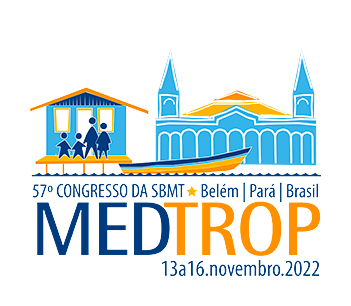Dados do Trabalho
Título
Antibacterial activity of thiazolidine-2,4-dione and 4-thioxo-thiazolidin-2-one derivatives against multidrug-resistant Staphylococcus aureus clinical isolates
Introdução
Antimicrobial resistance is one of the highest priorities in global public health with Staphylococcus aureus among the most important microorganisms due to its rapidly evolving antimicrobial resistance. Despite all the efforts of antimicrobial stewardship, research and development of new antimicrobials are still imperative. The thiazolidine ring is considered a privileged structure for the development of new antimicrobials.
Objetivo(s)
This study aimed to compare the antibacterial effects of two derivatives 2,4-dichloro-thiazolidine-2,4-dione and 2,4-dichloro-4-thioxo-thiazolidin-2-one against multidrug-resistant Staphylococcus aureus clinical isolates.
Material e Métodos
Antimicrobial susceptibility test was perfomed by broth microdilution method to determine the minimum inhibitory concentration (MIC) and the minimum bactericidal concentration (MBC) against 20 multidrug-resistant S. aureus clinical isolates from the Culture Collection of the Department of Antibiotics of the Federal University of Pernambuco – WDCM114. Time-to-Kill curves were determined during 24 h using and microplate spectrophotometer. In vivo antibacterial effect was evaluated using Caenorhabditis elegans as a host. The morphological changes induced in S. aureus cells by the exposure to both derivatives were observed using scanning electron microscopy, while unspecific toxicity was determined using humam peripheral blood mononuclear cells (PBMC) (CAAE 23236618.1.3001.5195).
Resultados e Conclusão
The derivatives exhibited MIC between 4-32 µg/mL, with time-to-kill curves showing a bactericidal effect up to 24 h (MIC and 2xMIC). In the in vivo infection model using C. elegans as a host, the derivatives increased nematode survival with a concentration-dependent effect. Exposure of S. aureus to the derivative 2,4-dichloro-4-thioxo-thiazolidin-2-one induced surface changes and decrease cell size, while no effect was observed for its analog. None of the derivatives was cytotoxic for human peripheral blood mononuclear cells (PBMC) with selective indices > 25.
Palavras-chave
Drug resistance, MRSA, biofilm, Caenorhabditis elegans, cytotoxicity
Área
Eixo 11 | Infecções causadas por bactérias
Categoria
NÃO desejo concorrer ao Prêmio Jovem Pesquisador
Autores
Kêsia Sena, Raudiney Mendes, Evillyn Bôtelho, Rosilma Araújo-Melo, Camila Silva, Henrique Costa Júnior, Glaucia Lima, Julianna Albuquerque, Rafael Matos Ximenes
